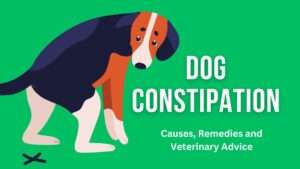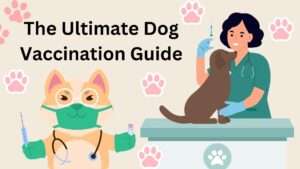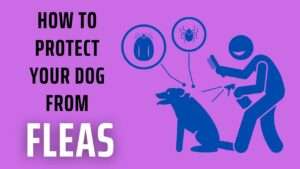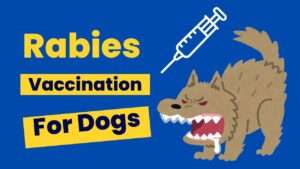Are you a dog owner pondering whether to spay your furry companion? Contemplating the pros and cons of this decision? Spaying, also known as ovariohysterectomy, is a common surgical procedure performed on female dogs. But what does it entail, and what are its implications for your pet’s health and behavior? Join us as we delve into the world of spaying, providing you with a comprehensive overview to help you make an informed decision for your beloved canine friend.
Contents Overview
What is Spaying?
Spaying involves the surgical removal of a female dog’s reproductive organs, namely the ovaries and uterus. This procedure is typically performed by a licensed veterinarian while the dog is under general anesthesia. Once spayed, the dog is unable to conceive and reproduce.
Why Spay Your Dog?
Spaying your dog is a significant decision that can positively impact her health, behavior, and the well-being of the community. Let’s explore the reasons why spaying is recommended for female dogs:
- Health Benefits:
- Prevention of Reproductive Organ Diseases: Spaying eliminates the risk of uterine infections, such as pyometra, which can be life-threatening if left untreated. It also significantly reduces the likelihood of mammary gland tumors, especially if performed before the first heat cycle.
- Reduced Risk of Reproductive Cancers: By removing the ovaries and uterus, spaying effectively eliminates the risk of ovarian and uterine cancers, which are common in unspayed female dogs.
- Prevention of Reproductive Disorders: Spaying may help prevent reproductive disorders such as ovarian cysts, which can cause discomfort and health complications.
- Behavioral Changes:
- Decreased Roaming Behavior: Intact female dogs often exhibit increased roaming behavior during the heat cycle, as they search for a mate. Spaying reduces this urge to roam, decreasing the risk of your dog getting lost or injured.
- Elimination of Heat-Related Behaviors: Hormonal changes during the estrus (heat) cycle can lead to behavioral issues such as restlessness, excessive vocalization, and attempts to escape. Spaying eliminates these heat-related behaviors, promoting a calmer and more stable temperament.
- Reduced Aggression: Spaying can help reduce aggression towards other dogs, particularly during the heat cycle when intact females may display territorial behavior.
- Population Control:
- Prevention of Unplanned Litters: One of the most significant benefits of spaying is preventing unwanted pregnancies and the birth of unplanned litters. This helps reduce the number of stray and homeless dogs in communities, alleviating the burden on shelters and reducing euthanasia rates.
- Promotion of Responsible Pet Ownership: By spaying your dog, you contribute to responsible pet ownership by ensuring that she does not contribute to the overpopulation of dogs. Responsible pet ownership includes providing proper care, training, and attention to your furry companion.
- Long-Term Health Considerations:
- Reduced Risk of Certain Health Issues: While there is ongoing research on the long-term health effects of spaying, some studies suggest that spayed dogs may have a reduced risk of certain health issues, such as mammary tumors and uterine infections.
- Potential Longevity: Spayed female dogs may live longer, healthier lives due to the elimination of reproductive-related health problems.
- Environmental Impact:
- Reduced Environmental Footprint: By preventing the birth of unwanted litters, spaying contributes to reducing the environmental impact associated with pet overpopulation. This includes reducing the strain on resources such as food, water, and shelter.
When to Spay Your Dog
Determining the optimal time to spay your dog involves careful consideration of various factors, including age, breed, health status, and individual circumstances. Let’s explore the key considerations for timing the spaying procedure:
- Early Spaying vs. Traditional Spaying:
- Early Spaying: Some veterinarians advocate for early spaying, performed as young as 8-16 weeks of age, to maximize health benefits and behavioral modifications. Early spaying is believed to offer greater protection against reproductive diseases and unwanted behaviors.
- Traditional Spaying: The traditional approach involves spaying around six months of age, before the first heat cycle. This timing has been widely accepted and is considered suitable for most dogs.
- Health Considerations:
- Physical Development: The timing of spaying should take into account your dog’s physical development. While early spaying may offer certain health benefits, it’s essential to ensure that your dog has reached an appropriate stage of growth and maturity to tolerate the surgery safely.
- Breed Size: Large and giant breed dogs may benefit from delayed spaying to allow for proper musculoskeletal development. Delaying spaying until skeletal maturity, typically around 12-18 months of age, may help reduce the risk of orthopedic issues such as hip dysplasia and cruciate ligament injuries.
- Behavioral Considerations:
- Hormonal Behaviors: Intact female dogs may exhibit hormonal behaviors during the heat cycle, including restlessness, increased vocalization, and attempts to escape. Spaying before the first heat cycle eliminates these hormonal fluctuations and associated behaviors.
- Roaming Behavior: Early spaying can help prevent the urge to roam, reducing the risk of your dog getting lost or injured while searching for a mate.
- Veterinary Recommendations:
- Consultation with Veterinarian: It’s essential to consult with your veterinarian to determine the most appropriate timing for spaying your dog based on her breed, health status, and individual needs. Your veterinarian can assess your dog’s readiness for surgery and provide personalized recommendations.
- Pre-Surgery Evaluation: Before scheduling the spaying procedure, your veterinarian will conduct a thorough physical examination and may recommend pre-operative blood work to assess your dog’s overall health and ensure she’s a suitable candidate for surgery.
- Community Guidelines and Regulations:
- Local Laws and Regulations: Some communities may have specific guidelines or regulations regarding the timing of spaying. For example, shelters and rescue organizations may require dogs to be spayed before adoption, influencing the timing of the procedure.
- Owner Preferences and Lifestyle:
- Owner’s Schedule: Consider your own schedule and lifestyle when planning the timing of the spaying procedure. Choose a time when you can provide adequate care and supervision during your dog’s recovery period.
- Future Breeding Plans: If you have no intention of breeding your dog, spaying at an early age eliminates the risk of accidental pregnancies and unwanted litters.
The Spaying Procedure:
The spaying procedure, also known as ovariohysterectomy, involves the surgical removal of a female dog’s reproductive organs, including the ovaries and uterus. Let’s delve into the details of the spaying procedure to understand what it entails:
- Pre-Surgery Preparation:
- Before the spaying procedure, your dog will undergo a thorough physical examination by a licensed veterinarian. This examination helps assess her overall health status and ensures she’s a suitable candidate for surgery.
- Depending on your dog’s age and health condition, your veterinarian may recommend pre-operative blood work to evaluate organ function and identify any underlying health issues.
- Your veterinarian may also provide instructions for fasting prior to the surgery to reduce the risk of complications during anesthesia.
- Anesthesia and Monitoring:
- On the day of the surgery, your dog will be administered general anesthesia to induce unconsciousness and prevent pain during the procedure. Anesthesia ensures that your dog remains immobile and unaware of the surgical process.
- Throughout the surgery, trained veterinary staff will closely monitor your dog’s vital signs, including heart rate, respiration, blood pressure, and oxygen saturation, to ensure her safety and well-being under anesthesia.
- Surgical Procedure:
- Once your dog is under anesthesia, the veterinarian will begin the surgical procedure by making a small incision in the abdomen, typically along the midline.
- The veterinarian will carefully locate and isolate the reproductive organs, including the ovaries and uterus, using specialized surgical instruments and techniques.
- The ovaries and uterus will then be surgically removed from the abdominal cavity. This process effectively eliminates your dog’s ability to conceive and reproduce.
- The surgical incision will be closed using either dissolvable stitches or surgical glue to promote healing and prevent infection. In some cases, external sutures may be used, which will need to be removed during a follow-up appointment.
- Post-Surgery Care:
- After the spaying procedure, your dog will be closely monitored during the recovery period to ensure a smooth transition from anesthesia. She may be placed in a quiet, warm recovery area to rest comfortably.
- Pain management medications may be prescribed to alleviate any discomfort or pain associated with the surgery. These medications help promote a more comfortable recovery for your dog.
- Your veterinarian will provide instructions for post-operative care, including wound care, activity restrictions, and monitoring for signs of complications such as infection or excessive bleeding.
- Follow-up appointments may be scheduled to assess your dog’s healing progress and remove any external sutures if necessary.
- Recovery and Rehabilitation:
- During the recovery period, it’s essential to provide your dog with a quiet and comfortable environment to rest and recuperate. Limit her physical activity to prevent strain on the surgical incision and promote proper healing.
- Monitor your dog closely for any signs of discomfort, infection, or other complications. Contact your veterinarian immediately if you notice any concerning symptoms.
- Follow your veterinarian’s instructions regarding post-operative care, including medication administration, dietary recommendations, and activity restrictions, to ensure a successful recovery for your furry friend.
Potential Risks and Complications
While spaying is generally considered a safe and routine surgical procedure, like any surgery, it carries certain risks and potential complications. Understanding these risks is essential for pet owners considering spaying for their female dogs. Let’s explore the potential risks and complications associated with spaying:
- Anesthesia Risks:
- Adverse Reactions: Anesthesia can cause adverse reactions in some dogs, ranging from mild to severe. These reactions may include vomiting, respiratory depression, or allergic responses to the anesthesia drugs.
- Cardiovascular Issues: Some dogs may experience fluctuations in heart rate and blood pressure during anesthesia, which can pose risks, particularly for dogs with pre-existing heart conditions.
- Surgical Complications:
- Infection: Surgical site infections are possible following spaying, although they are relatively rare. Proper surgical techniques, sterile instruments, and post-operative wound care can help minimize the risk of infection.
- Bleeding: Excessive bleeding during or after surgery can occur, particularly if blood vessels are not adequately cauterized or if a blood clotting disorder is present. Your veterinarian will monitor for signs of bleeding and take appropriate measures to control it if necessary.
- Improper Wound Healing: Poor wound healing or wound dehiscence (opening of the surgical incision) may occur in some cases. Factors such as excessive activity or licking of the incision site can contribute to wound complications.
- Long-Term Health Considerations:
- Orthopedic Issues: Some studies suggest a potential correlation between early spaying and an increased risk of certain orthopedic problems, such as hip dysplasia and cranial cruciate ligament (CCL) tears. However, further research is needed to fully understand these associations.
- Urinary Incontinence: Spayed female dogs may have a slightly higher risk of developing urinary incontinence, particularly if spaying is performed before sexual maturity. This condition can usually be managed with medication or other interventions.
- Post-Surgical Complications:
- Pain and Discomfort: While pain management medications are typically administered to alleviate discomfort after surgery, some dogs may experience pain or discomfort during the recovery period. It’s essential to monitor your dog’s behavior and consult with your veterinarian if you suspect she is experiencing pain.
- Delayed Recovery: In some cases, dogs may experience delayed recovery from anesthesia or surgical complications, resulting in a longer recovery period than anticipated. Close monitoring and follow-up care are crucial to address any issues promptly.
- Individual Variation:
- Age and Health Status: Age and overall health status can influence the risk of complications associated with spaying. Older dogs or those with pre-existing health conditions may have a higher risk of surgical complications.
- Breed and Size: Certain breeds and larger dogs may be more prone to anesthesia-related risks or surgical complications due to their size or breed-specific health considerations.
Post-Spaying Considerations
After your dog undergoes the spaying procedure, it’s crucial to provide appropriate care and support during the recovery period to ensure a smooth transition and promote her overall well-being. Let’s explore the post-spaying considerations for dog owners:
- Activity Restriction:
- Following spaying, it’s essential to limit your dog’s physical activity to prevent strain on the surgical incision and promote proper healing. Avoid activities such as running, jumping, and rough play during the recovery period.
- Leash walks for bathroom breaks are typically recommended, but avoid strenuous exercise until your veterinarian gives the green light.
- Wound Care:
- Monitor the surgical incision site regularly for signs of infection, such as redness, swelling, or discharge. Report any concerns to your veterinarian promptly.
- Follow your veterinarian’s instructions for wound care, which may include keeping the incision site clean and dry and avoiding bathing for a specified period.
- Prevent your dog from licking or chewing at the incision site, as this can delay healing and increase the risk of infection. An Elizabethan collar (cone) may be necessary to prevent licking.
- Pain Management:
- Your veterinarian may prescribe pain management medications to alleviate any discomfort or pain associated with the surgery. Administer these medications as directed to ensure your dog’s comfort during the recovery period.
- Monitor your dog’s behavior for signs of pain, such as reluctance to move or reluctance to eat, and contact your veterinarian if you suspect she is experiencing discomfort.
- Nutritional Support:
- Proper nutrition is essential for supporting your dog’s post-operative recovery and overall health. Follow your veterinarian’s dietary recommendations, which may include feeding a balanced diet and avoiding excessive treats or table scraps.
- Ensure that your dog has access to fresh water at all times to stay hydrated during the recovery period.
- Follow-up Care:
- Attend any scheduled follow-up appointments with your veterinarian to monitor your dog’s healing progress and address any concerns.
- Your veterinarian may remove any external sutures during a follow-up appointment and assess the incision site for signs of proper healing.
- Monitor for Complications:
- Keep a close eye on your dog for any signs of complications, such as excessive swelling, bleeding, or discharge from the surgical site.
- Monitor your dog’s appetite, behavior, and activity level, and contact your veterinarian immediately if you notice any unusual symptoms or behaviors.
- Spaying Benefits:
- Remember the long-term health and behavioral benefits of spaying your dog, including the prevention of reproductive organ diseases, reduction in certain types of cancers, and elimination of hormonal behaviors associated with the heat cycle.
- Spaying also contributes to population control efforts by preventing unplanned litters and reducing the number of homeless dogs in shelters.
Bottom Line
In conclusion, spaying is a significant decision that can have far-reaching implications for your dog’s health, behavior, and well-being. By understanding the procedure, its benefits, and potential risks, you can make an informed choice that prioritizes the health and happiness of your canine companion. Remember to consult with your veterinarian to determine the best course of action based on your dog’s individual needs and circumstances. Whether you choose to spay your dog or not, responsible pet ownership involves providing love, care, and attention to ensure a fulfilling life for your furry friend.




































+ There are no comments
Add yours